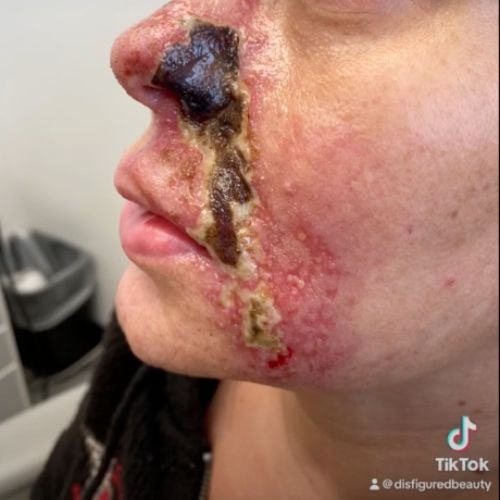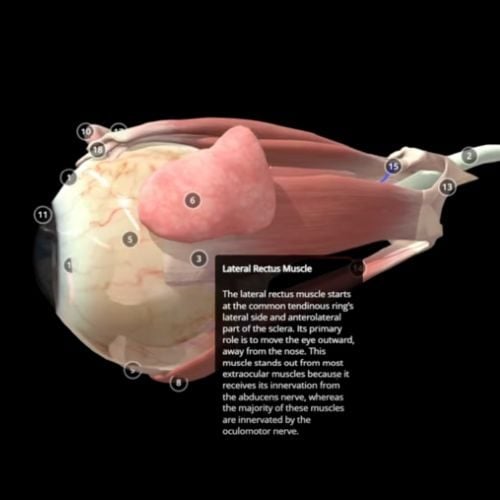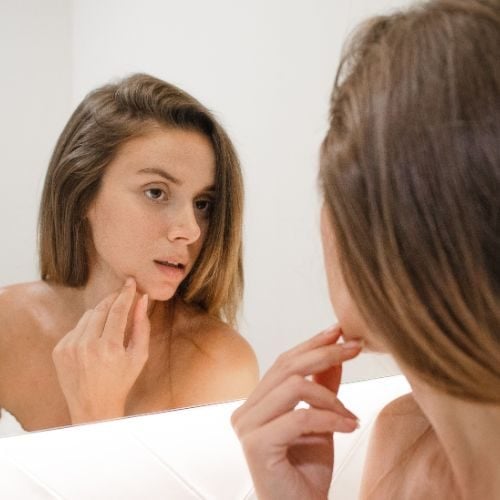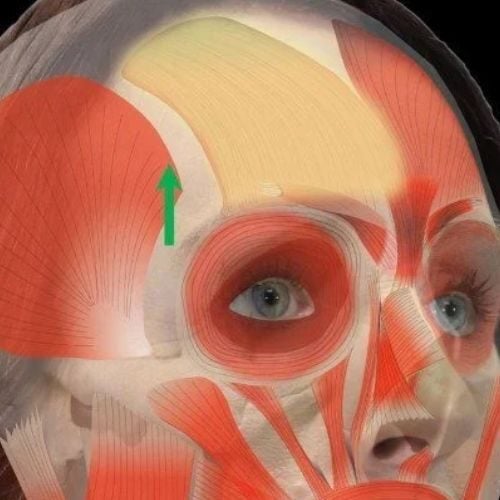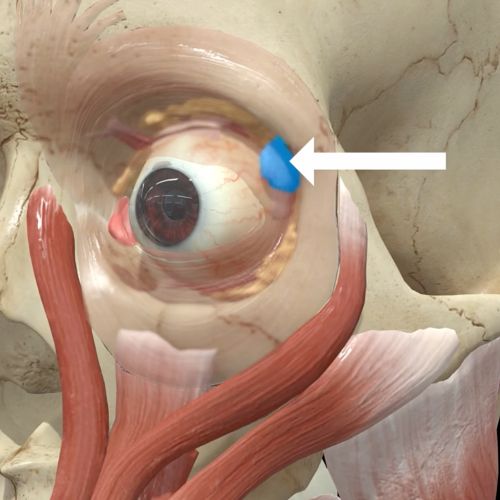- Mail us: support@drtimpearce.com
Know your muscle anatomy to avoid side effects from Botox in the lower face
You may be interested
 Dr Tim Pearce
Dr Tim Pearce

Despite botulinum toxin or Botox® treatments in the lower face being transformative for patients, the complexity of the muscle anatomy means that there is a much greater likelihood of causing significant side effects when treating the lower third of the face, compared to the upper. This is exactly why treating this area is not included in recommended foundation training in botulinum toxin treatments but is covered when aesthetic clinicians have enough experience to move on to training in advanced botulinum toxin treatment techniques.
In this blog, Dr Tim Pearce will discuss the complex musculature of the lower face and how to avoid nasty side effects. He looks at elevator and depressor muscle groups and their impact on four areas of advanced botulinum toxin treatment in the lower face:
- Masseter reduction
- Downturned mouth
- Gummy smile
- Platysmal bands for the Nerfertiti Lift
Dr Tim will be discussing more medical aesthetic training tips as part of his upcoming webinar series, so if you’re looking to increase your CPD-certified learning and want to learn more skills to make you a better clinician, then step one is to register for the free webinars by Dr Tim.
Muscle anatomy in the lower face
 The lower face is a much more complex zone that the upper face, simply because the function of the muscles in the top of the face is primarily non-verbal communication and protection of the eyes. In the lower face, the muscle function is more involved and needed for mastication (and drinking), speech (verbal communication), and non-verbal communication (smiling etc.). Therefore, there is much more going on in the lower face and the area is much more mobile.
The lower face is a much more complex zone that the upper face, simply because the function of the muscles in the top of the face is primarily non-verbal communication and protection of the eyes. In the lower face, the muscle function is more involved and needed for mastication (and drinking), speech (verbal communication), and non-verbal communication (smiling etc.). Therefore, there is much more going on in the lower face and the area is much more mobile.
Anatomically speaking, most muscles within the body are connecting bone to bone and contracting to create movement. In the face, this differs because you have many muscles that are either connected to other muscles or from bone to skin to provide the complex mobility, especially around the mouth, lips, and chin. In contrast, muscles needed for mastication do tend to be bone to bone, due to the forces required.
Within the structure of the mid-face, much support for the rest of the face is given by the zygoma and the maxilla, and areas below are somewhat ‘suspended’ from this sturdy support structure – the nose, mouth, and chin. The whole area then includes a variety of muscles which fall into the categories of elevators and depressors to achieve fine movement.
Elevator muscles in the lower face
Elevators are muscles that lift tissue upwards. Within the lower face, this movement is targeted around the mouth. This includes muscles involved in both smiling, speaking, and expressions of disgust. Core elevator muscles include zygomaticus major, levator labii superioris alaeque nasi, levator labii superioris, levator anguli oris and zygomaticus minor. When it comes to treating these muscles with Botox, this is primarily related to hyperactivity in the elevator muscles resulting in a ‘gummy smile’, where muscle elevation creates too much show of the gum line when smiling
Avoiding complications when treating elevator muscles in the lower face with Botox
There are potential side effects that can occur from over treating or accidental treatment of these elevator muscles with botulinum toxin, usually related to an asymmetrical smile.
A common accidental cause comes from injecting the upper face, specifically the orbicularis oculi muscle a little bit too deeply, going through the fat pad, and hitting the origin of the zygomaticus major.
Similarly, when treating a patient for gummy smile and attempting to relax the levator labii superioris alaeque nasi, there is chance of an asymmetrical result with the muscles elevating differently on each side of the nose.
Patients must be counselled during consultation that treating a gummy smile will result in a changed smile and becoming accustomed to a new smile can take time. Not all patients are happy with this, even if the treatment is clinically successful, they may dislike the new look. You can consider a low dose approach for the first treatment to help patients to adjust slowly.
Another potential impact on the elevator muscles comes from treating the masseter muscle, for masseter reduction (jawline contouring) or bruxism. If the botulinum toxin is placed a little superior and medial to the masseter muscle itself, you can affect the risorius muscle (the smile muscle – which pulls the corner of the mouth into a smile), causing a pronounced and distressing asymmetry. Avoidance of this complication, when treating the masseter, can be achieved by deep injection, as well as correct placement, due to the superficial interaction between masseter and risorius.
Depressor muscles in the lower face
Depressors are muscles that pull tissue down; within the lower face, this movement pulls the corner and the mid-point of the mouth downwards. When we smile, there is an element of elevation, often showing the top teeth and a downward pull on the lower lip area with some lower teeth show. Core depressor muscles include depressor anguli oris (this pulls down the corner of the mouth when creating the classic sad face or upside-down smile), depressor labii inferioris, and platysma.
Avoiding complications when treating depressor muscles in the lower face with Botox
The depressor anguli oris is often treated to relax or weaken the downward pull at the mouth corners to correct a downturned mouth or mouth heaviness than can come with ageing. As with treatments for gummy smile, patients should be counselled on the changing effects this will have on their existing smile, namely more elevation as the elevator muscles remain untreated, thus most of the visible smile (and teeth show) will be in the upper part of the smile, due to the relaxion of the lower part of the smile.
Accidental treatment of the depressor labii inferioris – that is close to and overlapping the depressor anguli oris in places – results in an asymmetrical lower lip upon smiling, causing a smaller smile with no, or misaligned, lower teeth show. Over treatment can also result in the opposite effect, resulting in the so-called Joker’s smile with too much elevation at the corners of the mouth after over weakening of the depressors.
The platysma muscles are a broad sheet of superficial muscle from the jaw down the neck which collects in bands upon contraction. The platysma can be relaxed with botulinum toxin to reduce visible bands and smooth the jawline, creating a streamlined neck, often called a Nefertiti Lift in likeness to the elongated neck of the Egyptian Queen. Accidental treatment of the depressor anguli oris when attempting to treat platysma, especially higher up, can also result in asymmetries in the lower mouth with too much weakness on one side.
Top tips for treating the lower face with Botox
When it comes to treating the lower face with botulinum toxin or Botox treatments, Dr Tim advises good anatomical knowledge of the complex musculature, a gradual or low dose treatment plan to start with, and a hands-on approach so you feel muscles and their movement as you treat. Do not simply rely on injection patterns and templates for accurate placement when targeting the desired muscles, as each patient is unique.
He also puts a focus on patient counselling during consultation because any relaxation of the muscles in this area, to effectively correction a clinical anomaly or cosmetic appearance that the patient dislikes, e.g., too much gum show or downturned mouth corners, will alter their resultant smile and they will need help and guidance to both understand and adjust to that result.
Why not get your hands on this beautiful anatomy poster, designed by Dr Tim Pearce as a useful reminder of all the muscles within the face.
Aesthetics Mastery Show
ADVANCED BOTOX ANATOMY: How to avoid nasty lower-face side effects
This blog follows our recent Aesthetics Mastery Show, in which Dr Tim Pearce explains why Advanced Botox treatments in the lower face are also much more likely to cause side effects than upper-face toxin, due to the complexity in the lower third muscle anatomy. Dr Tim also puts the spotlight on four advanced Botox treatments in particular: masseter reduction; downturned mouth; gummy smile; and platysmal bands, also known as Nefertiti lift.
Are you still anxious about delivering cosmetic injectables safely?
If you want to learn more about mastering medical aesthetic treatments and complications or conquering the anxiety of where to place your needle, then register for the next Dr Tim webinar.
Subscribe to our YouTube channel for really useful regular tips and advice. ![]()
Further complications resources
If you want to increase your confidence by learning how to handle complications, Dr Tim Pearce offers two comprehensive courses that are highly rated by our delegates:
Both give CPD and certificates on completion.
In addition, browse our FREE downloadable resources on complications.
Dr Tim Pearce eLearning
Dr Tim Pearce MBChB BSc (Hons) MRCGP founded his eLearning concept in 2016 in order to provide readily accessible BOTOX® and dermal filler online courses for fellow Medical Aesthetics practitioners. His objective was to raise standards within the industry – a principle which remains just as relevant today.
Our exclusive video-led courses are designed to build confidence, knowledge and technique at every stage, working from foundation level to advanced treatments and management of complications.
Thousands of delegates have benefited from the courses and we’re highly rated on Trustpilot. For more information or to discuss which course is right for you, please get in touch with our friendly team.
Botox® is a registered trademark of Allergan Aesthetics plc.
Related Articles
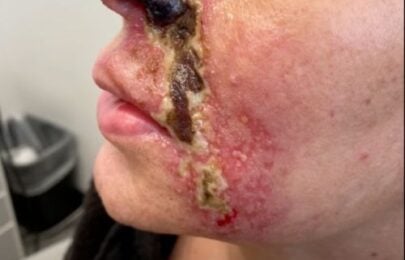 Bestseller
Bestseller
Vascular Occlusion and Necrosis Prevention: The Ultimate Safety System for Aesthetic Injectors
October 21, 2025
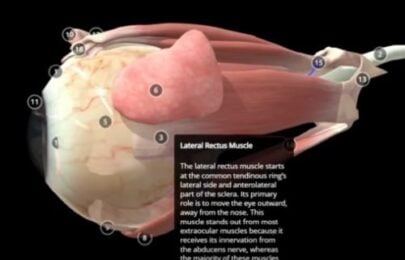 Bestseller
Bestseller
Preventing Double Vision from Botox: Mastering the Lateral Rectus Safety Zone
October 16, 2025
 Bestseller
Bestseller
Body Dysmorphic Disorder in Aesthetic Practice: Ethics, Risks, and Recognition
October 7, 2025

